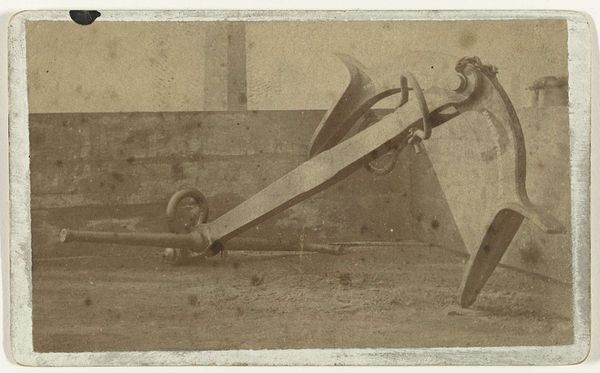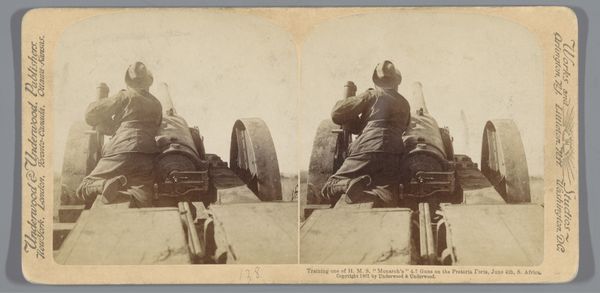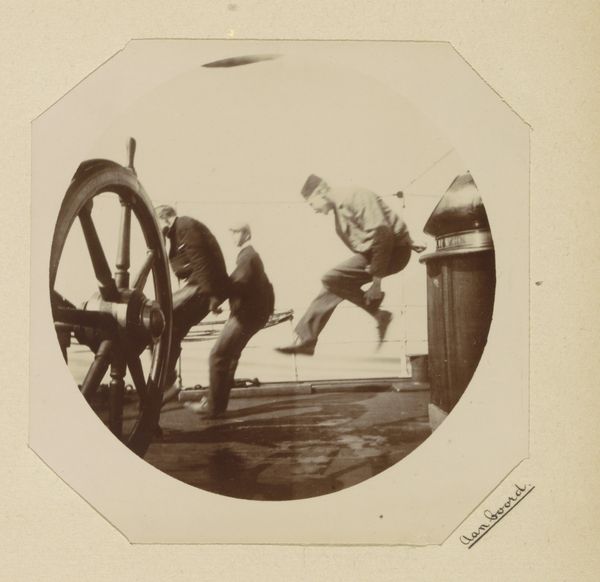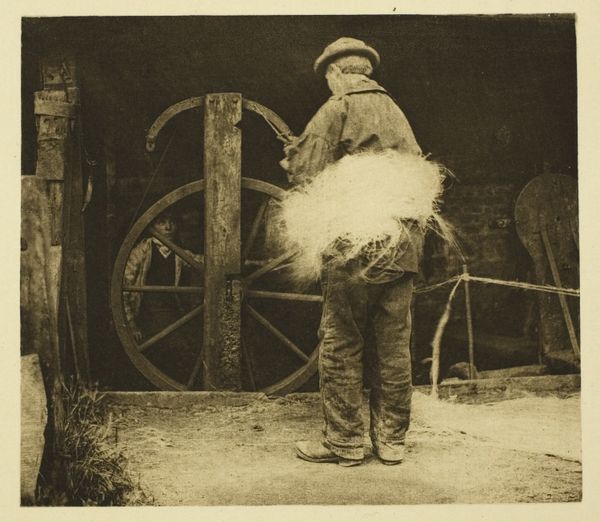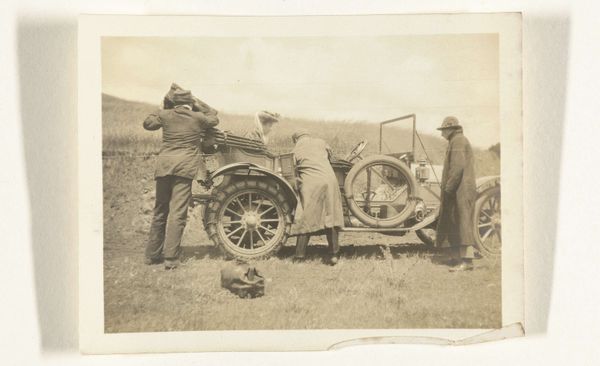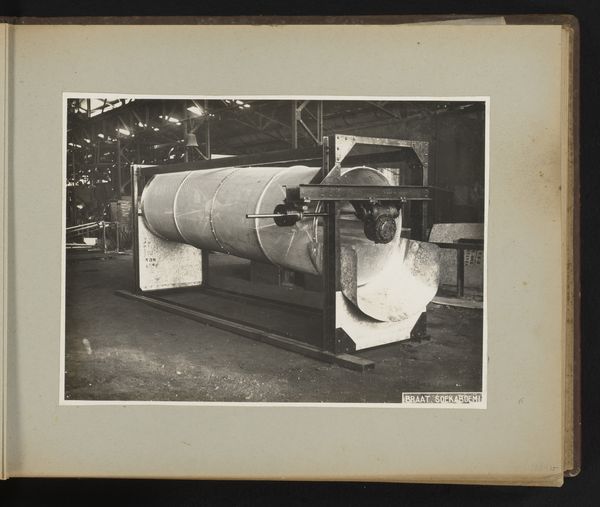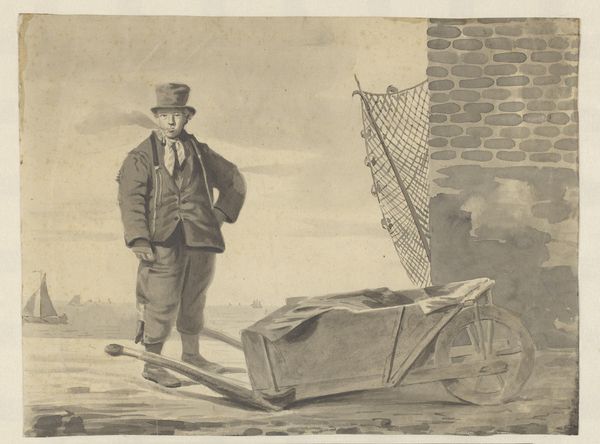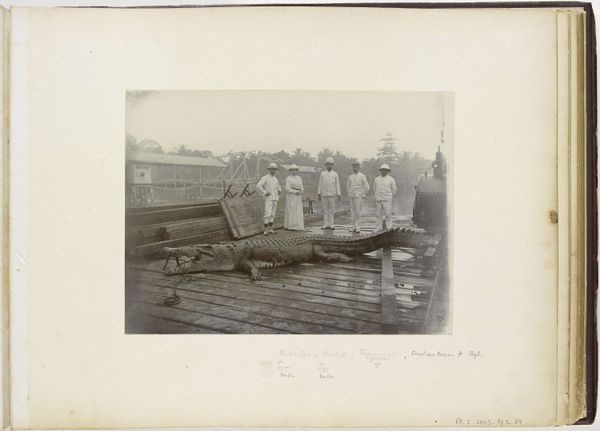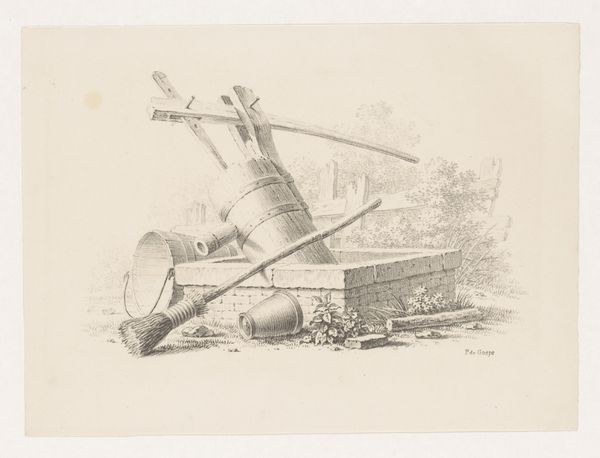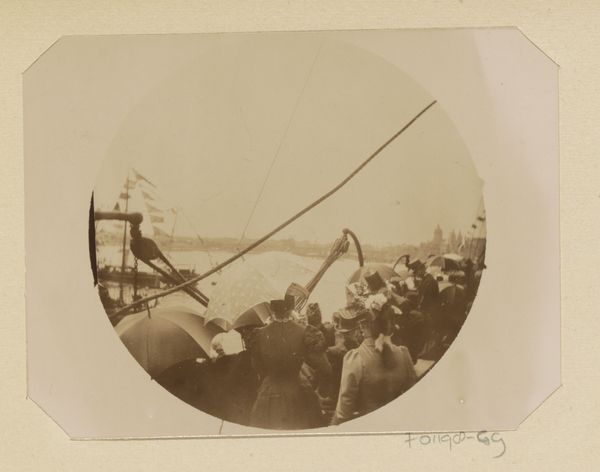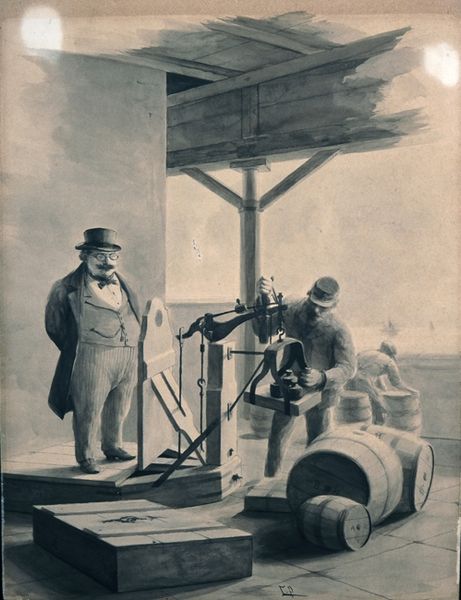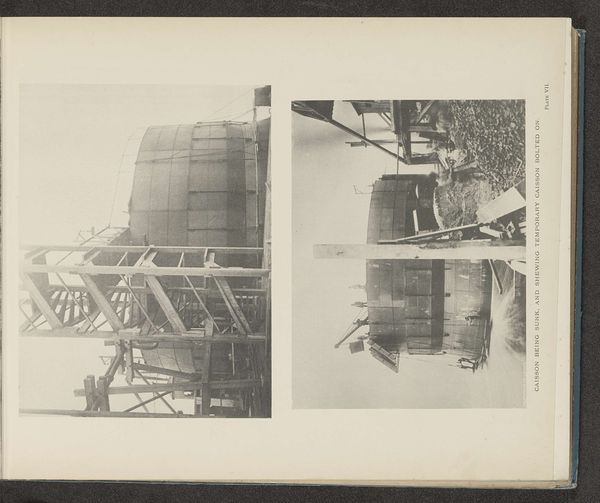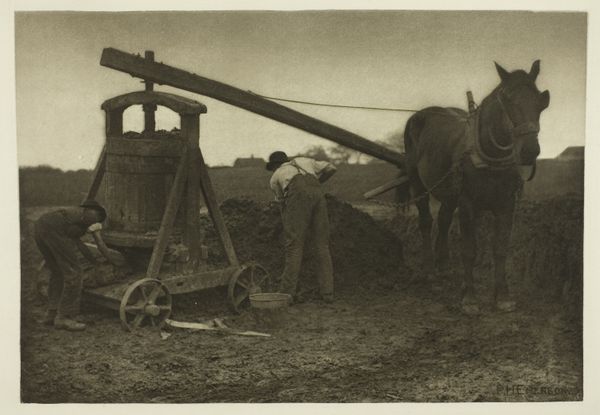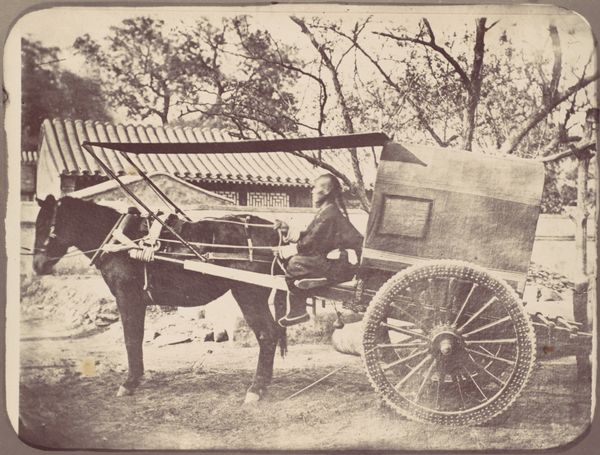
#
toned paper
#
light pencil work
#
photo restoration
#
caricature
#
personal sketchbook
#
old-timey
#
19th century
#
men
#
watercolour illustration
#
cartoon carciture
#
watercolor
Dimensions: Image: 20.8 x 25.4 cm (8 3/16 x 10 in.) Mount: 32.4 x 51.1 cm (12 3/4 x 20 1/8 in.)
Copyright: Public Domain
Curator: This remarkable photograph, titled "Shariki," or Cart-Pushing Coolies, was captured by Felice Beato around 1860. Editor: It strikes me immediately as an exercise in tonal control, really impressive for the period. The soft gradation from the dark clothing to the lighter background creates a palpable sense of atmosphere. Curator: Absolutely. Beato was known for his documentation of life and events, particularly in Asia. Here, he offers a glimpse into the lives of laborers, providing a visual record of their work in what was then a rapidly changing society. Editor: The composition itself is quite compelling, with the large wheel and the stacked crates creating a strong diagonal line that pulls the eye across the frame. The repetition of rectangular forms generates rhythm and highlights weight. It conveys the difficulty of labor almost abstractly. Curator: Precisely. Beato’s photographs played a vital role in shaping Western perceptions of Asia during the 19th century, influencing opinions on everything from trade to international relations. Think of the audiences viewing this – many would have little to no firsthand experience of Japan. Editor: And yet, I'm drawn to the individual gestures—the straining posture of the figures. You get a sense of both individual and collective exertion. Are we meant to focus on form, or individual stories? Curator: I'd argue the success here lies in both – it acknowledges collective plight while individualizing members within that population through body language. The cultural implications are complex. The image also demonstrates the role photography played in shaping understanding. Editor: It's interesting how the neutral tones really underscore the work itself, avoiding bright colors or stark contrasts. This piece is deceptively simple but really quite potent in its construction. It allows for engagement in these larger themes. Curator: Indeed. It reminds us to look closely, both at the aesthetic decisions and their wider implications of the moment in which they're captured. Editor: I agree, considering it, my mind continues going to Beato’s awareness of visual design in combination with his portrayal of labor and the time that birthed its creation, quite powerful!
Comments
No comments
Be the first to comment and join the conversation on the ultimate creative platform.
